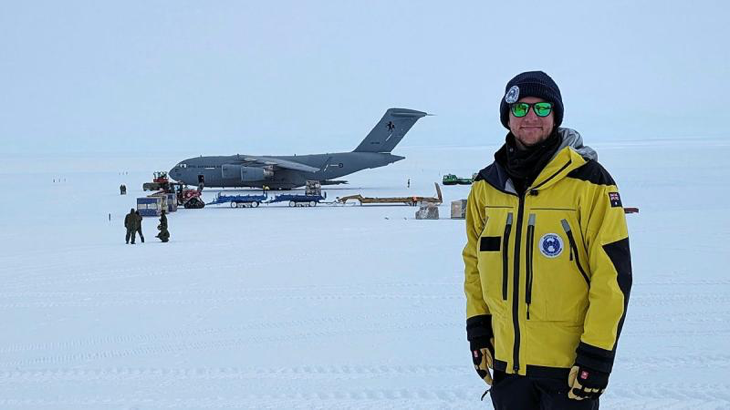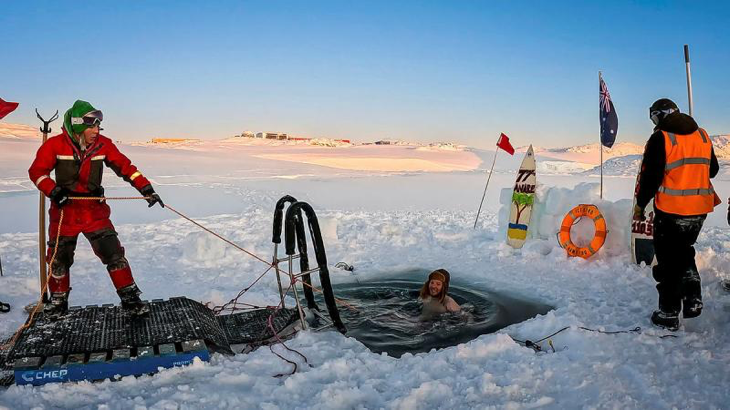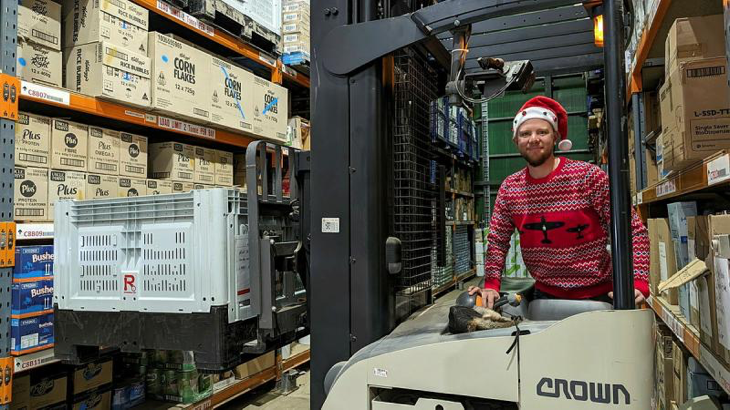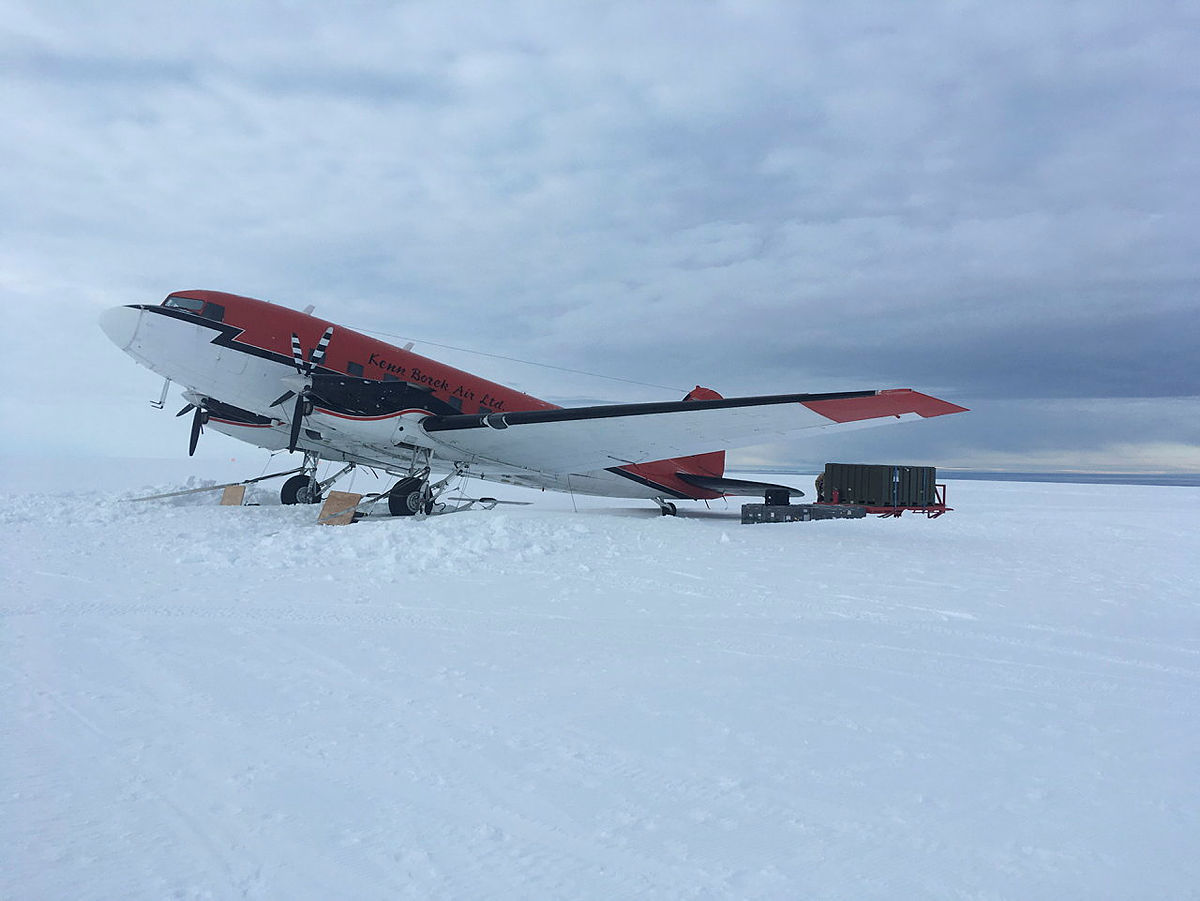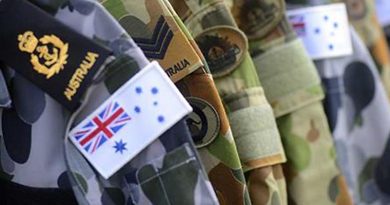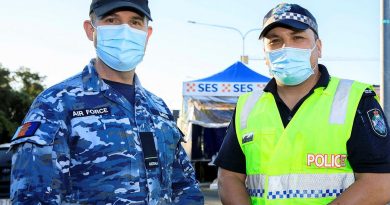Icy baths and picnics with penguins all part of my job
Share the post "Icy baths and picnics with penguins all part of my job"

While the east coast experienced a chilly start to winter in recent weeks, spare a thought for Antarctic expeditioners like Flying Officer Owen Horton.
CAPTION: Flying Officer Owen Horton standing in front of a RAAF C-17 at Casey Station, Antarctica. Story by Corporal Jacob Joseph.
The logistics officer took a year of leave to join the 77th Australian National Antarctic Research Expedition as part of a small team working in the coldest place on Earth at the coldest time of year.
“The winter solstice in Antarctica is an auspicious day — a bit of a Stonehenge vibe,” Flying Officer Horton said.
Just dozens remain at Casey Station – the largest of four research stations – during winter.
For those enduring the short and dark days, jumping into the frozen ocean on the solstice is a rite of passage.
But even rites of passage have their limits. The ambient temperature must be warmer than minus 45 degrees. On the solstice it was minus 50 and too cold to swim.
Flying Officer Horton got his chance a few days later.
CAPTION: Flying Officer Owen Horton swimming in the frozen ocean to celebrate the winter solstice.
The expeditioners cut a hole into the ocean ice and took turns jumping in before quickly rushing into a makeshift heated shed.
“Your fingers and your toes will go number than they’ve ever been,” Flying Officer Horton said.
“It’s a very painful kind of numb – they scream at you.
“I wish I could do it every day.”
When he’s not taking icy plunges, Flying Officer Horton is Casey’s supply officer, solely responsible for all stores coming on and off the station.
He said during winter, when the sun barely broke the horizon, expeditioners were in “caretaker mode” but keeping the station going in the harsh environment was still a full-time workload.
CAPTION: Managing supplies: Flying Officer Owen Horton working on Christmas Day at Casey Station.
Constant exposure to extreme blizzards and low temperatures take a toll on the station, which requires continual maintenance.
Come summer, numbers more than triple with around 150 expeditioners living at the station, including ADF members deployed on Operation Southern Discovery such as Air Force’s mobile air load team.
“The summer is crazy,” Flying Officer Horton said.
“Chefs need food, trades need consumables and cargo comes on and off RAAF C-17s.
“Scientists also send back invaluable samples, which require careful handling and supply chain planning.
“We hold about 300 shipping containers at any given time on station, so there’s a lot of juggling and repacking.”
Since opening in 1969, Casey Station scientists have carried out world-leading research such as ocean acidification experiments.
Today, the million-year ice core project and Denman terrestrial campaign are two major efforts. The Denman campaign studies one of Antarctica’s fastest retreating glaciers.
Scientists are drilling three kilometres deep to find an ice sample one-million years old to learn about Earth’s geological history.
“They’re both logistically heavy; there’s a lot of field support for those guys,” Flying Officer Horton said.
“We have light aircraft on my doorstep for resupply runs, these beautiful Douglas DC-3s with skis on them – one of them was built in 1943 and flew in Operation Market Garden.”
CAPTION: A Basler Aircraft DC-3 at the Casey Ski Landing Area at Casey Station.
About halfway through his 13-month stint, Flying Officer Horton said he is still as amazed as the first day he arrived.
“I saw a leopard seal jump out of the water and catch a penguin. It was nature at its most savage, the kind of thing you’d only ever see on a David Attenborough documentary,” he said.
“We throw on our hiking packs and walk out to a penguin colony, take a picnic and hang out with some wildlife – the starting price to do this as a tourist is about $30,000.
“The fact that I get to do this as part of my job is just incredible.”
.
.

.
.
Share the post "Icy baths and picnics with penguins all part of my job"

